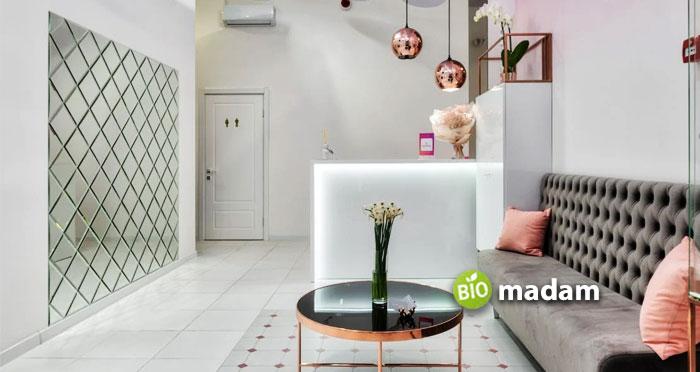Are you looking to revamp your dental clinic design and create a modern space that will impress both new and existing patients? A well-designed dental office can not only enhance the patient experience but also boost productivity and overall satisfaction.
In this blog post, we’ll share some tips for creating a modern dental clinic design that is functional, comfortable, private, welcoming, and technologically advanced. Whether you’re starting from scratch or renovating an existing space, these tips will help you create a state-of-the-art facility that meets the needs of today’s patients while staying ahead of the competition!
Functional Layout
The goal should be to create a space that maximizes efficiency and optimizes patient flow. This can be achieved by designing separate areas for reception, consultation, treatment rooms, and sterilization. The reception area should be spacious enough to accommodate patients comfortably while also providing privacy for check-in and check-out procedures.

Consultation rooms should have adequate space for dentists to discuss treatment options with their patients in comfort. The dental surgery design for the room should prioritize cleanliness, efficiency, and patient comfort. With proper ventilation, sterile surfaces, and ergonomic equipment placement, the dental surgery design ensures a safe and conducive environment for performing dental procedures effectively and providing a positive patient experience.
Treatment rooms, on the other hand, are the heart of any dental clinic, so they must provide ample space for both the dentist and the patient while allowing easy access to necessary equipment.
Sterilization areas are equally important as maintaining proper hygiene standards is essential in any medical facility. The overall layout of your dental clinic should aim at ensuring seamless movement from one area of the office to another without causing disruptions or overcrowding.
Comfortable Treatment Rooms
Patients often experience anxiety and stress when visiting the dentist, so providing a comfortable environment can help ease their concerns. Hence, to create a comfortable treatment room one must choose the right colors for the walls and furniture.
Soft, neutral tones like beige or light blue can have a calming effect on patients. Creating comfort is also ensuring that the room has proper ventilation and temperature control. It’s crucial to maintain a comfortable temperature throughout the appointment as it will prevent patients from feeling too hot or cold during their treatments.
The equipment used in treatment rooms can also affect patient comfort levels. Investing in ergonomic chairs with adjustable armrests and headrests can help ensure that patients remain relaxed while undergoing procedures.
In addition, incorporating sensory elements like music, aromatherapy diffusers or even artwork on walls may distract from any discomfort associated with dental treatments.
Attention to Privacy
Patients want to feel comfortable and secure during their appointments, whether it’s a routine cleaning or more invasive procedures. To ensure privacy, create individual treatment rooms with soundproof walls and doors. This allows patients to relax without worrying about others overhearing their conversations with the dentist or hygienist.
You should also consider the layout of the waiting area. While an open-concept design may seem inviting, it can also make patients feel exposed and uncomfortable. Consider adding dividers or partitions between seating areas for added privacy.
Additionally, digital signage in the waiting area can help maintain patient confidentiality by calling them back for their appointment without announcing their name out loud.
Technology Integration
For instance, you would want to consider digital imaging systems. These allow for quick and accurate diagnoses, reducing the need for X-rays or manual charting. This not only saves time but also lowers radiation exposure for patients. Another thing to consider is the use of electronic health records (EHRs). EHRs streamline patient data management, making it easier for dentists to access their patient’s medical history and keep track of treatment plans.
This simplifies communication between healthcare providers and improves overall patient care. In addition, some clinics opt for tools such as intraoral cameras or digital scanners to enhance diagnostic accuracy during procedures like root canal treatments or cavity fillings.
With these tools, dentists can see problem areas while explaining treatment needs directly on screen – leading to higher levels of transparency with patients.

Open and Welcoming Reception Area
The reception area is the first point of contact for patients when they enter a dental clinic. It’s essential to create an open and welcoming space that makes them feel at ease. A well-designed reception area can help reduce patient anxiety and set the tone for their entire visit.
To create an open and welcoming reception area, start by choosing comfortable furniture that complements your overall design aesthetic. Consider incorporating natural materials such as wood or stone to add warmth and texture to the space.
Lighting is also important in creating a welcoming environment. Make sure you have plenty of natural light coming in through windows if possible, but also consider adding ambient lighting fixtures like floor lamps or pendant lights to soften the mood.
Use of Natural Light
One of the key advantages of natural light is that it can help create a calm and relaxing environment for patients. This is because natural light tends to have a calming effect on people, which can be particularly beneficial in a dental setting where patients may feel anxious or nervous. Another advantage of incorporating natural light into your dental clinic design is that it can help reduce energy costs.
By allowing more daylight into your space, you can reduce your reliance on artificial lighting during daytime hours. When planning how to use natural light in your dental clinic design, consider factors such as window size, placement, and orientation. Maximizing access to sunlight through windows and skylights will allow for optimal utilization of this resource.
However, it’s important to balance the amount of natural light with privacy concerns. Patients still need privacy during treatments so make sure adequate measures are taken while designing treatment rooms with exposure-minimizing features like frosted glass or blinds.
By implementing a functional layout, comfortable treatment rooms, attention to privacy, technology integration, an open and welcoming reception area, and the use of natural light; your dental practice will be a place that people want to visit.
Remember that the goal of your dental clinic design should be to create a space where patients feel comfortable and at ease during their visits. By considering all aspects of your patient’s experience from the moment they walk through the door until the moment they leave; you will have created a holistic approach to healthcare.
Ultimately, investing in designing an exceptional dental clinic is worth it because it not only enhances brand image but also helps improve patient satisfaction rates which leads to better business results.

Hi, they call me Jenna, and I am also known for achieving a gold medal during my Ph.D. in science life. I always had a dream to educate people through my utmost writing hobby. So, I chose this blogging path, and Biomadam gave me this opportunity to present for them. I now stand to entertain you. Continue reading my articles & discuss if you’ve any confusion through the comment section below.

